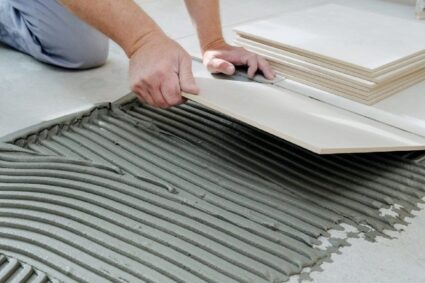
Choosing the right roofing materials is essential to protect your home from the elements and enhance its curb appeal. This ultimate guide will help you navigate the myriad options available, ensuring that you make an informed decision based on your needs, budget, and style preferences.
Table of contents
- Factors to Consider When Choosing Roofing Materials
- Climate and Weather
- Aesthetic Appeal
- Budget
- Lifespan and Durability
- Popular Roofing Materials
- Asphalt Shingles
- Metal Roofing
- Clay and Concrete Tiles
- Wood Shingles and Shakes
- Slate
- Eco-Friendly Roofing Options
- Solar Shingles
- Green Roofs
- Recycled Roofing Materials
- Roofing Material Maintenance
- Asphalt Shingles
- Metal Roofing
- Clay and Concrete Tiles
- Wood Shingles and Shakes
- Slate
- Conclusion
Factors to Consider When Choosing Roofing Materials
Before diving into the different types of roofing materials, consider the following factors:
Climate and Weather
The climate in your area will significantly impact the durability and performance of your roofing materials. For example, if you live in an area prone to heavy snowfall, you’ll need a roofing material that can withstand the weight and frequent freeze-thaw cycles.
Aesthetic Appeal
Your roof should complement your home’s architectural style and overall design. Keep in mind color, texture, and material when making your decision. For more home decor tips, check out this article on color psychology in home decor.
Budget
Different roofing materials come at varying price points, so it’s essential to establish a budget before making a decision. Consider not only the upfront cost but also long-term expenses such as maintenance and replacement.
Lifespan and Durability
A long-lasting roofing material will save you money in the long run by reducing the need for frequent replacements. Additionally, it should be able to withstand harsh weather conditions and other external factors.
Popular Roofing Materials
Here are some popular roofing materials to consider for your home:
Asphalt Shingles
Asphalt shingles are the most common roofing material in North America due to their affordability and ease of installation. They typically last between 20-30 years and come in various colors and styles.
Metal Roofing
Metal roofs are known for their durability, lasting up to 50 years or more. They are also energy-efficient, reflecting sunlight and reducing heat absorption. Metal roofs come in various styles, including standing seam, corrugated, and metal shingles.
Clay and Concrete Tiles
Clay and concrete tiles are popular in Mediterranean and Southwestern-style homes. They are fire-resistant, long-lasting (up to 50 years), and low-maintenance. However, they can be heavy, so it’s essential to ensure that your home’s structure can support the weight.
Wood Shingles and Shakes
Wood shingles and shakes offer a natural, rustic appearance and can last up to 30 years if properly maintained. However, they require more maintenance than other materials and may not be suitable for areas with high fire risk.
Slate
Slate is a premium roofing material known for its longevity (up to 100 years) and distinctive appearance. However, it’s expensive and requires professional installation.
Eco-Friendly Roofing Options
If you’re looking for environmentally-friendly roofing materials, consider the following options:
Solar Shingles
Solar shingles integrate solar panels into your roof, allowing you to generate clean, renewable energy while maintaining your home’s aesthetics. To learn more about renewable energy sources, check out this article on how long Tesla batteries last.
Green Roofs
Green roofs are covered with vegetation, providing insulation, improving air quality, and reducing urban heat island effects. They also offer a unique aesthetic appeal and can be an excellent choice for urban environments.
Recycled Roofing Materials
Some roofing materials are made from recycled content, reducing the environmental impact of manufacturing. These materials include metal roofs made from recycled metals, rubber roofing made from recycled tires, and composite shingles made from recycled plastics and wood fibers.
Roofing Material Maintenance
Different roofing materials require varying levels of maintenance. Here are some general maintenance tips for popular roofing materials:
Asphalt Shingles
Regularly inspect your roof for damaged or missing shingles and replace them promptly. Clean debris from gutters and downspouts to prevent water damage.
Metal Roofing
Inspect metal roofs for signs of corrosion, loose fasteners, or damaged panels. Apply a protective coating every few years to prolong the life of your metal roof.
Clay and Concrete Tiles
Regularly inspect tiles for cracks or damage and replace them as necessary. Clean your roof of debris, moss, and algae to prevent water buildup and damage.
Wood Shingles and Shakes
Treat wood shingles and shakes with a wood preservative to prevent rot and insect damage. Keep the roof free of debris and moss to prolong its lifespan.
Slate
Inspect your slate roof for broken or damaged tiles and replace them promptly. Ensure that gutters and downspouts are clean and functioning correctly.
For more home maintenance tips, check out this article on cleaning flat paint walls.
Conclusion
Choosing the right roofing material for your home is a crucial decision that will impact your home’s protection, aesthetics, and long-term value. By considering factors such as climate, budget, and style, you can select the best roofing material that meets your needs and enhances your home’s overall appeal. And don’t forget to maintain your chosen roofing material properly to ensure its longevity and performance.




















